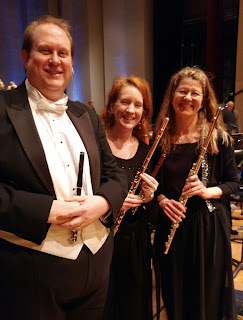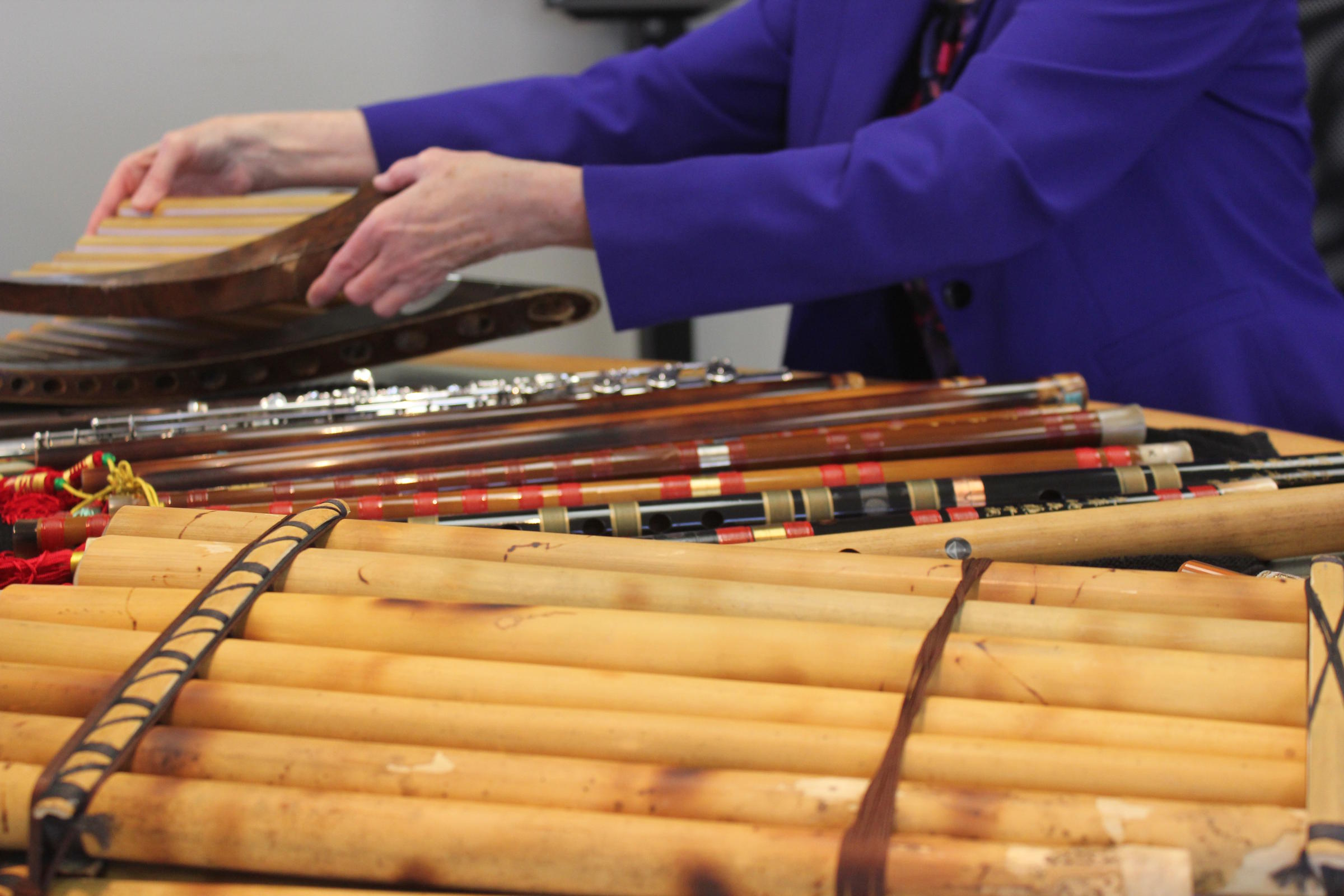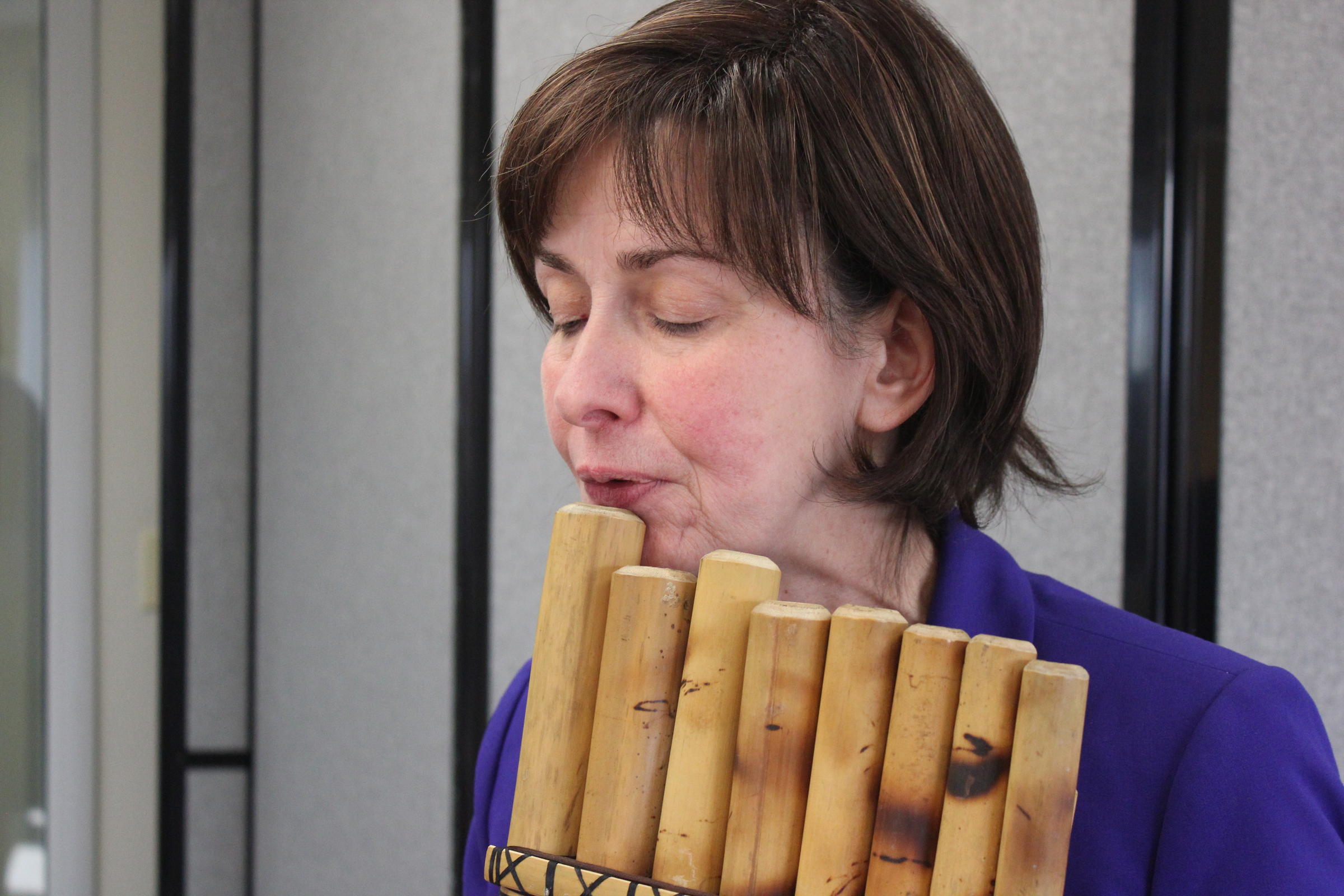October 17, 2015
I am sitting in the orchestra pit on opening night of
Puccini’s La Bohème, the all-time
favorite opera of so many opera fans, contemplating the timeless and tragic
love story. As a piccolo player, I have
long stretches of time during performances when I rest with nothing to
play. Sometimes (during rehearsals only)
I catch up on my reading, check my email or just close my eyes and listen to
the beautiful music. The story of La Bohème is very familiar to me and on
this occasion, perhaps the sixth or seventh production of this opera that I’ve
played over the years, I let my mind wander.
I wonder about the back story of the characters and challenge myself to
imagine Mimi’s past. Is she really so guileless?
At the beginning of the opera we meet four poor and carefree
young men living together in a Paris garret apartment in the 1830’s. They are idealistic artiste types (a poet, a
painter, a philosopher and a musician) who can’t afford to pay the rent. Next
we meet Mimi, the quintessential sympathetic operatic heroine suffering from
tuberculosis, who also lives in the building.
She and Rodolpho, the poor poet, are forced together by chance when her
candle is extinguished by a draft on the stairs. His friends have all gone out
on the town and are waiting for him.
Mimi knocks on the door to get a light for her candle, they each sing an
aria, are obviously attracted to each other, then go out to join his friends at
the café. Of course they fall in love, break up, get back together, break up
again, and she dies. The End.
Sorry to be so cavalier about the plot of the opera but
please remember that the end of this imagined back story is the beginning of
Mimi and Rodolfo’s romance in La Bohème.
***
Mimi was thrust into living on her own at the age of 17
when her mother died unexpectedly. She never knew her father, a common enough
scenario in 1830’s Paris. Mimi was a tender-hearted girl, raised to be kind to
everyone, “because all people, regardless of their circumstances, are to be treated
with respect,” as her mother was fond of saying.
Mother and daughter were very close and Mimi felt the
loss deeply when her mother died. She rarely ventured out of her little apartment
and sometimes forgot to eat. She
half-heartedly tried to continue the business her mother started – stitching
little flowers and monograms on handkerchiefs and pillowcases for the
bourgeoisie. Mimi inherited her mother’s skill in needlework and their
fledgling seamstress business was becoming more successful before her mother
died. Some of their customers took pity on the poor girl by bringing meals to
her and trying to send more business her way but that was short-lived and Mimi
was soon very much on her own. One young woman about town who remembered Mimi
from their school days took more than a passing interest in her dilemma and
came to visit one day.
“Who is there?” Mimi called when she heard the knock on
the door.
“It’s me, Musetta,” came the cheerful reply.
Mimi rose from her chair by the sunny window, where she was
working on a particularly intricate flower design, to answer the door.
“Musetta, it’s lovely to see you. Please come in.” Mimi
tried to arrange a pleasant disposition on her face as she opened the door and
stood aside to let Musetta enter. “Would
you like some tea?”
“I would love a cup of your tea, dear Mimi,” and Musetta
made herself quite at home. “I had to come by to see how you are doing and to
bring you these new hankies. I would
like some pink roses on one and lavender on the other. Can you also monogram
them with my initials?”
Mimi returned with the tea and examined the new
handkerchiefs. “Well, yes, I think I can
manage it. This is very fine silk. It
may take a while to finish it.”
“Oh, it doesn’t matter, they’re a gift from Alcindoro. He’s a bit daft and has probably already
forgotten that he gave them to me,” finishing her statement with a twitter of
laughter.
Musetta studied the tea in her teacup, replaced the cup in its saucer, and suddenly became very serious. “Mimi, have you met
your new neighbors, the young men who moved in to the attic apartment above
you?”
Mimi flushed involuntarily and replied, “well, yes, er,
no, I haven’t exactly met them but I have seen them and I’ve certainly heard
them bustling about up there.” She remembered seeing one particularly handsome
young man and felt herself blush at the thought. Just then, quite unbidden on
her part, Mimi’s reverie was interrupted by a convulsion of coughing and she found
it impossible to continue talking.
“Mimi, my dear, you must have that cough looked after by
a doctor.” Musetta rose from her chair
to put an arm around Mimi’s quaking shoulders.
“It sounds horrible!”
Mimi slowly regained her composure, glancing quickly at
the handkerchief into which she had coughed for signs of blood and, to her
relief, found none. Paying for a doctor was out of the question and Mimi didn’t
consider it. In an effort to assuage Musetta’s concern, she sipped her tea and returned
to her visitor’s inquiry. “I’ll be
alright. You asked about the young men upstairs?”
“Yes, one of them, Marcello – he’s a painter, is an old
boyfriend of mine and I want him back.
I’m tired of Alcindoro. He has a
lot of money and buys me gifts but I’d rather have love. Marcello is the
closest thing I’ve had to true love and I want to give it another chance. Can
you help me?” Musetta leaned in toward Mimi with an earnest look on her face.
Mimi was a bit shocked by Musetta’s candid
statement. She would never have thought
of asking an old friend for such a favor or, for that matter, speaking so
openly about her intentions. On the other hand, remembering her mother’s words
to always be kind, and finding it difficult to refuse an old friend’s heartfelt
plea, agreed to the request while hoping that this Marcello fellow wasn’t the
one she herself found so interesting. It would be nice to find love but simple
companionship would be alright, too. Those ruffians upstairs might be just what
she needed to distract herself from her grief.
“What can I do?”
Musetta revealed her plan and received confirmation from
Mimi that she would carry out her part of the scheme before they parted
company. As Mimi walked her friend to the door, Musetta abruptly turned to
clasp Mimi’s cold little hands in hers, placing in them the silk hankies which
she had brought to have embroidered. “I think you need these more than I
do. You keep them, dear.”
She rushed out the door leaving Mimi to wonder about what
had just transpired in her gloomy little apartment. She had been feeling very tired lately and
tried to take a nap but found that she was too nervous so took a walk instead,
thinking that the fresh air would bring a glow to her face. She found herself
strangely excited about their plan and began to spruce herself up for the
intended meeting with the boys upstairs.
At the agreed-upon time, Mimi picked up her key, took her
candle into the hall and cautiously ascended the stairs to the garret. She had heard a lot of banging around a few
moments before, then many noisy footsteps descending the stairs, and then all
was quiet. Maybe they had gone out. What a relief that would be! It would get her off the hook for her part in
Musetta’s plan.
She blew out her candle and immediately felt guilty.
I’ll
just knock very lightly and maybe they won’t hear. I can tell Musetta that
nobody was home.
She barely made a sound as she tapped lightly on the
door.
“Who is it?” came the voice from inside.
Oh
dear, there is someone at home. I feel faint. “Pardon me.”
She heard him say, “a woman!” then scuffling around.
Soon the door opened and she saw the young man with whom
she felt a rising infatuation. Was this Musetta’s painter? Her astute powers of
observation detected no paint spatters on his clothing so perhaps this one was
fair game. He gave her a tender look and her heart melted on the spot. She
hoped she could have him all to herself.
For the
conclusion of the story, please watch “La Boheme” by Puccini.


















